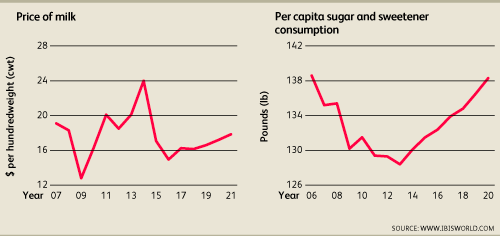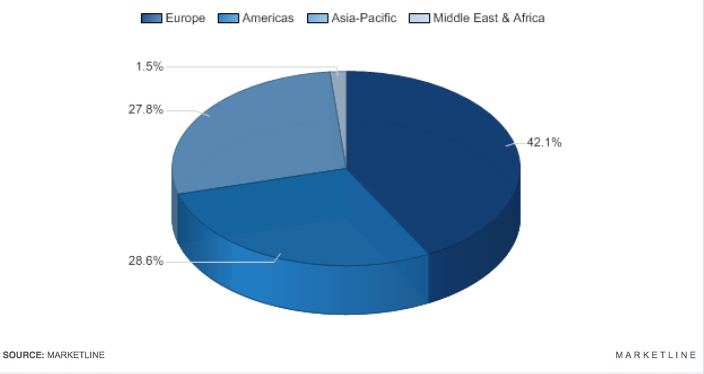Writing Examples
Blog Post
Perús Shoes
What’s better than a collaboration between fashion and philanthropy? With Perús Shoes, making a difference in the world is as simple as buying a pair of shoes.
1 Pair = 1 Day of school
In 2007, Jean Gabriel Cabot visited Peru and fell in love. Near Cusco he discovered the ASVIN school, a local school dedicated to getting children an education at no cost to their families. This helps put the children on a good path for their future, and keeps them off the streets towards a brighter future.
Upon learning about the ASVIN school, Jean Gabriel Cabot created the NGO Los Chicos de Cusco to help fund ASVIN. Today, Los Chicos de Cusco is helping to fund three schools in Cusco. So far, Perús Shoes has donated more than €15 000 to putting children through school.
You can join the movement too!
Along with advancing education for children, Perús Shoes also offers cute, trendy shoes that are perfect for everyday wear! Whether you are heading on a grocery run, to meet up for lunch or to a concert, Perús Shoes will be the new go to shoe in your closet.
With Perús Shoes, buying one pair of shoes funds a day of school for these children. Not only are Perús Shoes helping children in need, but they also come in many trendy styles. What are you waiting for?
https://www.perus.co
Industry Overview
MEMORANDUM
Per your request, I have completed a report on the global ice cream industry. This report will give you an understanding of the ice cream industry both domestic and globally. Below this report discusses relevant topics within the ice cream industry including an overview of the industry, major players, key markets and drivers, and trends and products.
Overview of the Industry
The ice cream industry is a well-established and large industry. With millions of consumers all around the world, the global demand for ice cream is steady, yet hinges on the ever changing preferences of the consumers. The ice cream industry brings in around $8.3 billion in revenue and about $569.3 million annually (Yucel, 2016). The ice cream industry consists of five different major types of products for sales including the largest component, ice cream in retail packaging bringing in about 45.7% of revenue (Yucel, 2016). After retail packaged ice cream comes frozen novelties, other frozen desserts, low-fat and nonfat ice cream, and then bulk ice cream bringing in the other 54.3% of revenue in the industry.

(Yucel, 2016)
Major Players
According to IBISWorld, there are four major players within the ice cream industry that make up about 64% of the market share. These companies include Nestle SA with 21.6% of the market, Nestle SA owns ice cream brands such as Dreyer’s Grand Ice Cream Inc., Haagen-Dazs, and more. Unilever is another major player with 21.5% of the industry, owning major ice cream brands such as Ben & Jerry’s and Magnum. The other two major players in the industry are Dean’s Food Company and Wells Enterprises Inc.

(Yucel, 2016)
Key Markets and Drivers
Overview
There are a variety of factors that play a large role in the performance of the ice cream industry including consumer preferences, prices of milk and sugar, disposable income, and health trends.
Milk and Sugar Prices
Milk and sugar are two of the main ingredients used to make ice cream. Therefore, when the price of milk or sugar goes up or down, the cost of ice cream does as well. Over the last few years the price of milk has been on the rise after a big drop in 2008 (Yucel, 2016). This drop gave ice cream companies an opportunity to lower prices and try to attract new customer, however milk and sugar weren’t the only factors affected in 2008.
Disposable Income
Along with a drop in milk and sugar prices, there was also a drop in disposable income in the U.S.. Disposable income is expected to increase in the coming years, and will provide consumers with the chance to purchase more premium ice creams and spend more within the industry, 34% of consumers said they would spend more on a premium product rather than a conventional product (Carper, 2016).
Health Trends
The past few years have encouraged an increase in health consciousness and diet trends, which plays a large role in the way the consumer buys ice cream. As more consumers become health conscious and unwilling to purchase the classic ice creams which are high in dairy and sugar, the sales of these ice creams decrease. This consistently poses a challenge for the ice cream industry and incentivizes the ongoing cultivation of innovating new ice creams and staying relevant to the health conscious consumer. New flavors and trends are always on the forefront of the ice cream industry, bringing in more revenue for companies and more options for the consumers. This ranges from creating dairy free and vegan options to finding the newest revolutionary flavor.

(Yucel, 2016)
Trends and Products
New Flavors
In the U.S., the current top three ice cream flavors are chocolate, vanilla and butter pecan (Decker, 2016). However, the ongoing invention of new flavors is one of the biggest trends within the ice cream industry, especially in recent years. As a way to get the consumer’s attention, ice cream companies are infusing everything from booze, coffee and even hot sauce. Flavors like sriracha, basil avocado and Momofuku Milk Bar’s famous cereal soft serve ice cream are getting a lot of attention from consumers (Gonzales, 2015).
Hand-held Products
As Kimberly Decker states in her article, savory flavors are the new trend in the ice cream industry. Consumers are looking for more experience and stimulation in their ice cream indulgences. While new flavors and healthy options are a consistent trend in the ice cream industry, there has been a notable increase for the demand of hand-held products in the global markets. According to Lu Ann Williams, single-serve ice cream lines are currently the most popular in Asia accounting for 40% of ice cream introductions. Whereas 20% in Europe are also leaning towards this trend (Williams, 2015). In the U.S., Sarah Kennedy states that while frozen yogurt sales have been falling, frozen novelty sales have seen a 3.9% increase (Kennedy, 2016).
Global Market Place
The ice cream industry is prominent on a global scale, bringing in revenue from across the globe. Below is a chart showing the largest shares of the ice cream industry across the world.

(Global Ice Cream, 2013)
This industry report has covered relevant information within the ice cream industry including an overview of the industry, major players, key markets and drivers, and trends and products. If you have any questions, let me know at student@email.arizona.edu .
References
Carper, J. (2016). A churning desire to be fresh. Dairy Foods , 117 (11), 46-49. Retrieved on November 18, 2016 from EBSCOhost Database.
http://eds.b.ebscohost.com.ezproxy4.library.arizona.edu/ehost/pdfviewer/pdfviewer?sid=feae37b 5-042c-4955-9bb8-af8fee65d244%40sessionmgr102&vid=1&hid=108
Decker, K. J. (2016). Consumers are sweet on savory. Dairy Foods , 117 (5), 54-57. Retrieved on November 18, 2016 from EBSCOhost Database.
http://eds.b.ebscohost.com.ezproxy1.library.arizona.edu/ehost/pdfviewer/pdfviewer?sid=fe85037 2-5464-4af9-8ea7-43ef0a17e16c%40sessionmgr101&vid=1&hid=112
Global Ice Cream. (2013). Ice Cream Industry Profile: Global , 1-36. Retrieved on December 7, 2016 from EBSCOhost Database. http://eds.b.ebscohost.com.ezproxy2.library.arizona.edu/ehost/detail/detail?sid=309c8bab-691b- 4d9a-abc9-f8f85c9052c3%40sessionmgr104&vid=0&hid=122&bdata=JnNpdGU9ZWhvc3QtbG l2ZQ%3d%3d#AN=85784738&db=bth
Gonzales, E. (2015). 25 Crazy Ice Cream Flavors You Need to Taste to Believe. Yahoo Food . Retrieved on November 29, 2016 from yahoo.com.
Kennedy, S. (2016). Ice cream sales are mostly melting. Dairy Foods , 117 (1), 46. Retrieved on December 7, 2016 from EBSCOhost Database. http://eds.b.ebscohost.com.ezproxy2.library.arizona.edu/ehost/detail/detail?sid=88e7da6a-99db-4 669-a1bb-b71311c72b4a%40sessionmgr105&vid=0&hid=122&bdata=JnNpdGU9ZWhvc3QtbG l2ZQ%3d%3d#AN=112360897&db=bth
Williams, L. A. (2015). Global Ice Cream, Novelty Trends. Prepared Foods , 184 (2), 15-16. Retrieved on November 18, 2016 from EBSCOhost Database.
Yucel, I. (2016). IBISWorld Industry Report 31152. Industry Outlook in Ice Cream. Retrieved on November 18, 2016 from IBISWorld Database.
http://clients1.ibisworld.com.ezproxy3.library.arizona.edu/reports/us/industry/default.aspx?entid =249

